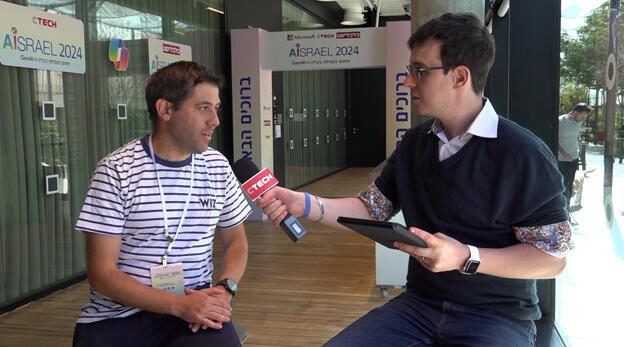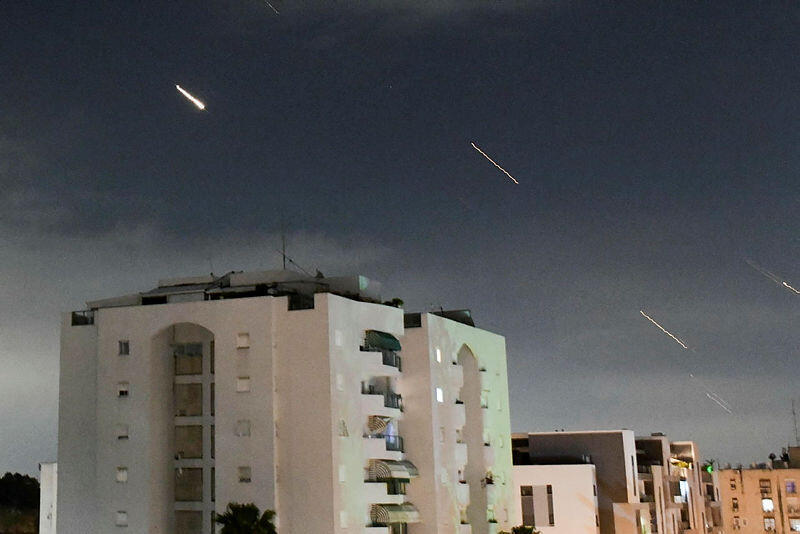
From Arrow to Iron Dome: The economics of Israel's air defense strategy
From Arrow to Iron Dome: The economics of Israel's air defense strategy
How much did it actually cost Israel to shoot down Iran’s flood of ballistic missiles, cruise missiles, and suicide drones?
The successful interception of more than 100 ballistic missiles launched early Sunday morning towards Israel from Iranian territory has reignited an old discussion that took place in Israel about 13 years ago, after the first successful interceptions of rockets from Gaza using the Iron Dome.
In both cases, the costs of interception and the severity of the threats are fundamentally different, but it seems that the answer that the security establishment gives to this question is summed up in the fact that however expensive they may be, the interceptions of the threats are better than the potential damage they may cause.
While the former financial advisor to the Chief of Staff and the defense establishment, Brigadier General (ret.) Reem Aminoach, estimated yesterday that the cost of containing the extensive and unprecedented Iranian attack aimed at Israel ranges between NIS 4-5 billion (approximately $1.08-1.35 billion), other security and economic sources estimated in conversations with Calcalist that the cost of the interceptions was about half of this amount, about NIS 2-2.5 billion ($540-670 million).
And yet, these are huge sums. The price of a single Iron Dome interceptor missile is about $50,000, and most of the time, it is directed at an inaccurate, primitive rocket with a relatively small payload. In the case of intercepting a ballistic missile from Iran, the numbers are in completely different spheres.
According to estimates, the price of an Arrow missile is about $2.5 million, while the price of the target missile it is aimed at is similar. According to one source, it is possible that the price of a ballistic missile that is capable of covering a distance of about 2,000 km will be even higher than that of the interceptor that downs it. “And yet, in a war with Iran and its proxies in the Middle East, it is always better for Israel that the encounter takes place on the technological front where it has a clear advantage. The alternative is fighting on the ground in Lebanon or Gaza. The cost of intercepting such a missile is far less significant than the way it is sometimes presented.”
The defense establishment did not provide details about the scope of use of each of the types of interceptor missiles that Israel directed at the flood of ballistic missiles, dozens of cruise missiles, and about 200 suicide drones that Iran launched at it.
In addition to the many Arrow missiles, the intercept missions also included missiles launched by the David's Sling system, which were aimed at the cruise missiles, and the Iron Dome, and yet some missiles nevertheless managed to penetrate Israel's airspace, targeting areas in Jerusalem, the Golan Heights, and the Negev. The price of a single interceptor launched by the David's Sling system is estimated at one million dollars, and it is still unclear how many of these were launched at the Iranian missiles.
The Arrow missiles were developed and manufactured by Israel Aerospace Industries, and according to the company's CEO Boaz Levy, the many interceptions they completed early Sunday morning "cost quite a bit of money." He refused to specify exactly how much, but noted that "the issue of money and the cost of the interceptions is not the issue, but the potential damage that was avoided."
Other senior officials in the defense system said things in a similar vein. Director of the Israel Missile Defense Organization (IMDO) Moshe Patel, who is in charge of the Arrow missile program, said that "Establishing such a defense system, its development and production cost money. However, we are in war, and in war first and foremost we save people, protect strategic installations and prevent the economy from coming to a stop, the declines in the stock market and the enormous damage to property. These contributions are tens of times greater than the cost of the required defense system and the cost of the missiles we launched. This is a very central tool for the defense of the country."
According to a senior security official who is aware of the costs, "If we had done all the work alone, without the help of the Americans and air forces from friendly countries, we would have reached much higher interception costs, and also the effort that would have been required on our part to intercept the absolute majority of the threats would have been completely different."
The large barrages launched from Iran towards Israel were defined by a security source as "one of the heaviest scenarios we thought about." However, in a briefing for military reporters on Sunday, Patel said that the security establishment was prepared for a much more serious attack scenario than the one it faced.
According to Danny Gold, head of the Israeli Directorate of Defense Research & Development (DDR&D): "We had a difficult and complex battle, one of the most complex in the world in the field of integrated defense of cruise missiles, ballistic missiles, UAVs, and rockets." He referred to the leakage of a small part of the ballistic missiles into Israeli territory and said that "there is no such thing as a 100% success rate and still, we have a very high percentage of interceptions. We are investigating the events, extracting lessons and insights from them and applying them."
The security establishment sees the flare-up with Iran, which led to the first direct military conflict between it and Israel, as a fundamental strategic change in the Middle East that will also carry extensive economic implications. A senior official estimated in a conversation with Calcalist that the sharp escalation that is bringing the region closer to an all-out war may speed up and shorten moves in the U.S. to transfer the special security aid to Israel that U.S. President Joe Biden formulated, amounting to approximately $14.5 billion. It is possible that the scope will also be slightly increased. The special aid will be transferred in addition to the annual American security aid which amounted to $3.8 billion.
Meanwhile, since the containment of the giant attack, the U.S. has been pressuring Israel to avoid a military response in Iran and to be content with the success of its defense systems, alongside the extensive cooperation it received from friendly air forces that helped shoot down many drones far from Israeli territory. Although an Israeli response to the Iranian attack could cause Iran to respond, even more widely and even to the point of an all-out war, it should define the new rules of the game created in the Middle East where Iran becomes a major player no longer hiding behind its proxy organizations.
However, the total mobilization of the USA, along with additional air forces that assisted in curbing the Iranian blitz, will oblige Israel to pay more attention to the demands addressed to it by Washington, among other things around the war in Gaza. The U.S. has also supported during the past decades, with generous funding to the extent of billions of dollars at the expense of the American taxpayer, the construction of the Israeli air defense systems so that it is possible to expect that Prime Minister Benjamin Netanyahu will restrain his political partners, the leaders of the far right, who until now have not shied away from expressing their demonstrable contempt for the Biden administration.
Since the beginning of the current campaign, Arrow 2 and Arrow 3 missiles of the IAI have with impressive success intercepted a series of threats directed by the Houthi rebels in Yemen towards Israel. However, the ability of these systems to intercept barrages on a large scale and in a complex layout, as demonstrated early Sunday, may boost sales of the system. Israel has already struck a NIS 14 billion deal to sell the Arrow 3 to Germany.
At the end of last week, and while Israel was on high alert for the Iranian revenge, Germany’s State Secretary at the Federal Ministry of Defence Benedikt Zimmer visited Israel and was the guest of Director-General of the Israeli Ministry of Defense Eyal Zamir. A significant part of the meetings between the two dealt with the promotion of Germany's plan to equip itself with Israeli defense missiles.
The Israeli message to the Germans was that despite the war in Israel and the many production challenges faced by its defense industries, the IAI had already begun initial operations to produce the Arrow 3 for use by Germany and that the contract between the two countries would be implemented as planned.
The interception capabilities demonstrated by the Air Force's Arrow system may later be translated into additional transactions, as long as such are approved by the United States, which for many years financed its development processes with a considerable amount of money.















